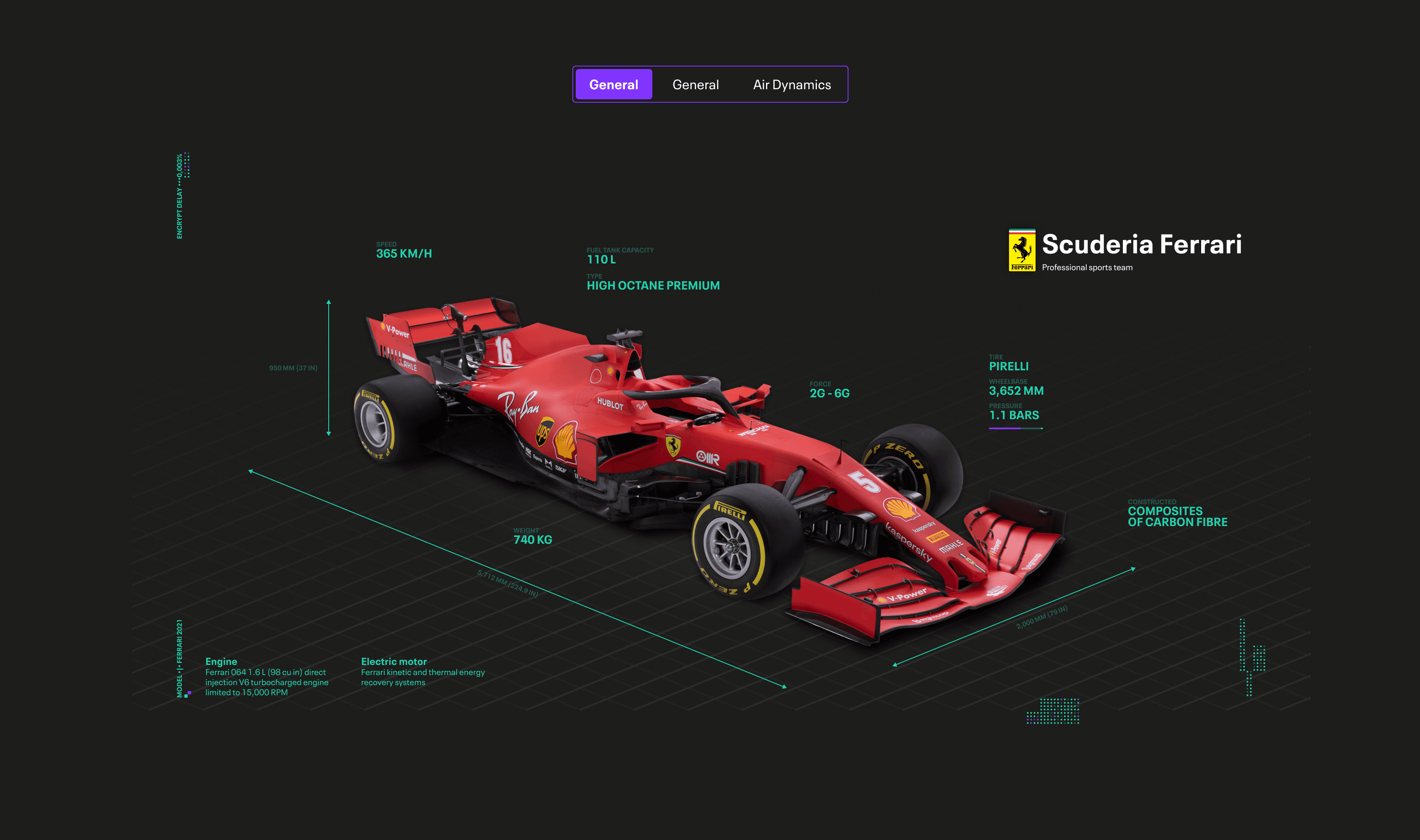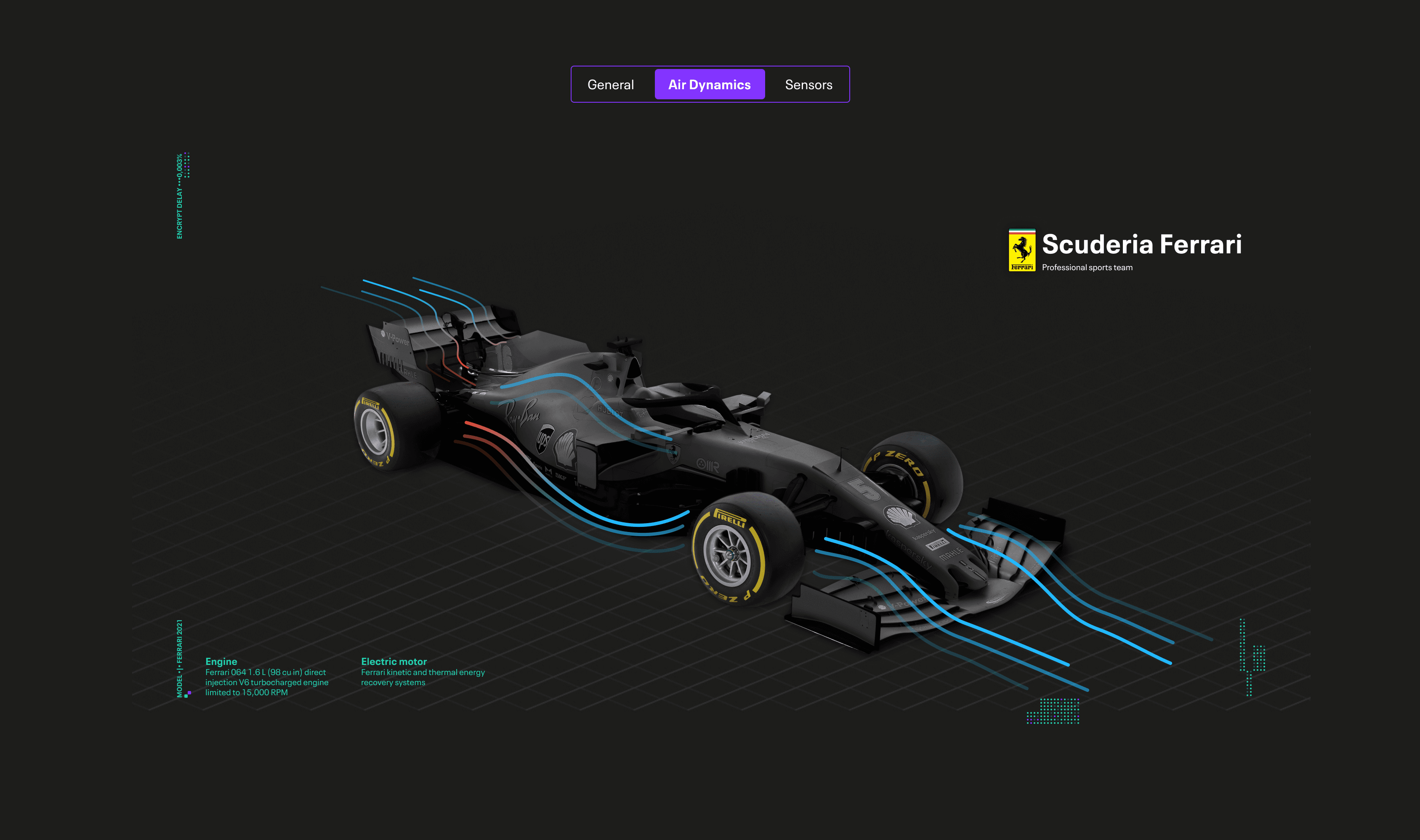Side project
Formula 1 x Kaspersky Lab
Story
Cybersecurity is paramount in both the business and private spheres, and the sports world is no exception, especially as technology plays an increasingly vital role. Formula 1, a highly lucrative industry, generates billions in revenue annually through close collaboration with various technology domains. With Formula One's owner, Liberty Media, being publicly traded, we have access to their financial reports each quarter. For the 2022 calendar year, F1 reported total revenues of $2.573 billion, up from $2.136 billion in 2021. This underscores the critical need for security, even in the realm of sports.
Most of the cyber threats faced by F1 teams are similar to those encountered by organizations worldwide, such as phishing attacks, which aim to pilfer usernames, passwords, and sensitive data, or the ever-present menace of ransomware.
Explore how Formula 1 teams defend against cyberattacks here.

Story
The racing season is a fierce competition, determining who will claim the championship, the best driver, and the top team of the year. To achieve maximum success, every piece of data is processed and analyzed before, during, and after races, but especially during. During a race, nearly 3TB of data is collected about the driver, the car, the environment, various forces at play – essentially, everything. There's no room for delay; the difference in transmission time between real and received data can be as little as 0.003 seconds. Beyond time, security is paramount. What if another team attempted to peek behind the scenes and access our driver's current data? Or a third party tried the same and later sold this information to other teams or disrupted data transmission?
That's precisely why Kaspersky Lab and Formula 1 embarked on a joint project that focuses specifically on cybersecurity during races.


Design


goal
The goal was to showcase the partnership's story on a landing page. Let's be honest; it doesn't sound overly thrilling. After all, who hasn't dozed off during a Sunday afternoon race? Exactly! So why would anyone find such a page exciting?
That's why our aim was to turn dry facts into something a bit more captivating.
In a project like this, information needs to be conveyed like a story.


Introduction
The history of Formula 1, the current race location.
Plot
The race itself, where everything happens.
Protagonist
In this case, it's not the driver; it's the data, a whopping 3TB of it.
Outcome
...and over the course of a story, we do get to know and identify with the protagonist. That's why it's crucial to visualize the data in a way that people can understand. After all, how much is 3TB? How many kilograms is that? How much time does it represent? What makes it so significant?

Story
Cybersecurity is paramount in both the business and private spheres, and the sports world is no exception, especially as technology plays an increasingly vital role. Formula 1, a highly lucrative industry, generates billions in revenue annually through close collaboration with various technology domains. With Formula One's owner, Liberty Media, being publicly traded, we have access to their financial reports each quarter. For the 2022 calendar year, F1 reported total revenues of $2.573 billion, up from $2.136 billion in 2021. This underscores the critical need for security, even in the realm of sports.
Most of the cyber threats faced by F1 teams are similar to those encountered by organizations worldwide, such as phishing attacks, which aim to pilfer usernames, passwords, and sensitive data, or the ever-present menace of ransomware.
Explore how Formula 1 teams defend against cyberattacks here.

Story
The racing season is a fierce competition, determining who will claim the championship, the best driver, and the top team of the year. To achieve maximum success, every piece of data is processed and analyzed before, during, and after races, but especially during. During a race, nearly 3TB of data is collected about the driver, the car, the environment, various forces at play – essentially, everything. There's no room for delay; the difference in transmission time between real and received data can be as little as 0.003 seconds. Beyond time, security is paramount. What if another team attempted to peek behind the scenes and access our driver's current data? Or a third party tried the same and later sold this information to other teams or disrupted data transmission?
That's precisely why Kaspersky Lab and Formula 1 embarked on a joint project that focuses specifically on cybersecurity during races.


Design


goal
The goal was to showcase the partnership's story on a landing page. Let's be honest; it doesn't sound overly thrilling. After all, who hasn't dozed off during a Sunday afternoon race? Exactly! So why would anyone find such a page exciting?
That's why our aim was to turn dry facts into something a bit more captivating.
In a project like this, information needs to be conveyed like a story.


Introduction
The history of Formula 1, the current race location.
Plot
The race itself, where everything happens.
Protagonist
In this case, it's not the driver; it's the data, a whopping 3TB of it.
Outcome
...and over the course of a story, we do get to know and identify with the protagonist. That's why it's crucial to visualize the data in a way that people can understand. After all, how much is 3TB? How many kilograms is that? How much time does it represent? What makes it so significant?





